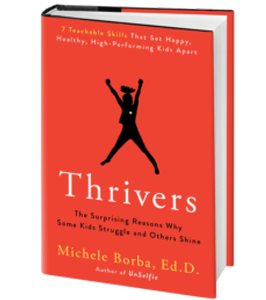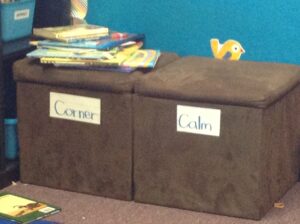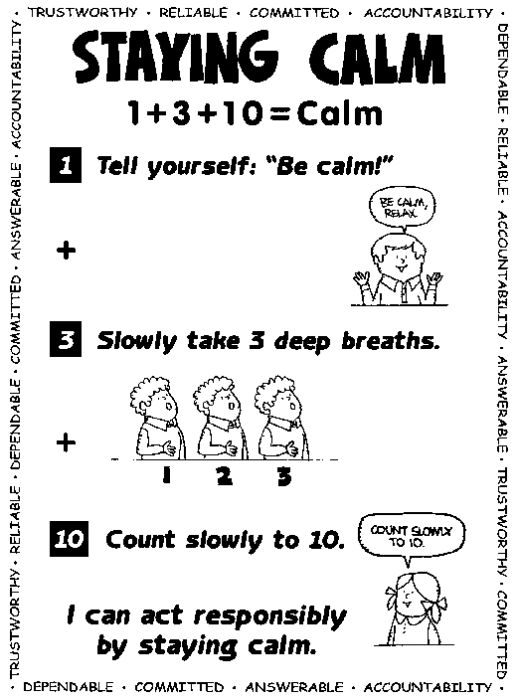7 Strategies to Ease Children’s Stress in Anxious Times
It’s no secret that kids today are more stressed than ever and why we must help ease children’s stress. In a world of ever-increasing uncertainty, our children are feeling anxious in ways that we never experienced when we were young. Pandemics, school shootings, fires, earthquakes and hurricanes are just a few reasons. Research also confirms our kids are stressed…and at far high levels than we may acknowledge.
A recent survey “APA Survey Raises Concern about Parent Perceptions of Children’s Stress” confirmed that parents not only underestimate their children’s stress levels, but also may not fully recognize the impact stress can have on physical and psychological health.
Studies find that eight to ten percent of American kids are seriously troubled by stress and the symptoms associated with it.
In fact, kids are now suffering from stress and as early as the age of three—a shocking reality that is sadly going mostly undetected by parents. And then came the Pandemic.
Hidden Dangers of Untamed Stress
If children and teens don’t learn healthy ways to manage stress, it can have both short-term consequences (bedwetting, short-temperedness, inability to focus, sleep-deprivation and weakened immunity from illness), as well as serious long-term health implications that can increase their likelihood for anxiety and depression.
If left unchecked, stress can affect not only our children’s friendships and school success, but also their physical and emotional well-being. Stress also reduces their abilities to thrive and become their personal best.
A common trait of resilient children is that they have learned protective buffers to help minimize stress build-up. That’s why I named Self-Control as one of the seven essential character strengths of resilient children and peak formers in my book, Thrivers.
We can teach children healthy ways to manage their stress. In fact, doing so may be one of our most important tasks.
Here are a few stress-busting strategies that I shared recently n the TODAY show. Introduce your child to one at a time, and see what resonates best. Then practice it repeatedly until your child can use the tool without you. Weaving practice into daily routines is the optimum way to help kids learn any skill.
7 Simple Ways Help Kids Calm Down and De-Stress
1. Blow your worries away
Teach young children to blow their worries away by pretending to blow up a balloon in their tummy as you slowly count to three and then let it out with an exaggerated “ahhh” sound like they use at the doctors office. Place your child’s hands on his stomach for him to feel his breaths. Too often kids try to take quick, fast breaths from their chest instead of their stomach—it doesn’t work!
Say, “Taking a slow deep breath is an easy way to reduce your stress and let your worries out.”Kids can also practice taking slow, deep breaths using a pinwheel or bubble blower until they get the right “feel.” Young kids like to pretend that the bubbles are their worries blowing away.
2. Melt the tension
Tell your child to make his body feel stiff and straight like a wooden soldier so that every bone from his head to toe is “tense” (or “stressed”). Now tell him to make his body limp (or “relaxed”) like a rag doll or windsock. Once the child realizes he can make himself relax, he can find the spot in his body where he feels the most tension; perhaps his neck, shoulder muscles, or jaw.
He then closes his eyes, concentrates on the stress spot, tensing it up for three or four seconds, and then lets it go.
While doing so, tell your child to imagine the stress slowly melting away from the top of his head and out his toes until he feels relaxed or calmer.
3. Use a positive phrase to stay cool
Teach your child to say a comment inside her head to help her handle stress. She can say comment such as: “Calm down.” “I can do this.” “Stay calm and breathe slowly.” “It’s nothing I can’t handle.” Then repeat the comment until the child can use the phrase without your reminder. Your voice will become your child’s voice.
4. Visualize a calm place
Ask your child to think of an actual place he’s been to where he feels peaceful. For instance: the beach, his bed, grandpa’s backyard, a tree house. When stress kicks in, tell him to close his eyes, imagine that spot, while breathing slowly.
5. Teach a stress buster formula
A very effective strategy to help kids calm down and reduce stress is called “1 + 3 + 10.” Print the formula on large pieces of paper and hang it up in your child’s bedroom or on the fridge. Then tell the child how to use the formula:
“As soon as you feel your body sending you a warning sign that says you’re getting tense, do three things. First, stop and tell yourself: ‘Be calm.’ That’s 1. Second, take three deep slow breaths from your tummy. That’s 3. Now count slowly to ten inside your head. That’s 10. Put them all together it’s 1 + 3 + 10 and doing it helps you stay cool.”
Consider making a reminder of the formula using marking pens and construction paper with your child. Then hang it on the refrigeration as a visual reference for family members. “Looks like you need a 1 + 3 + 10!” Soon they’ll be using the coping skill without you!
6. Make a stress box
There is no right or wrong way to reduce stress, the key is to offer kids options so they can find what works best for them. And once they find their unique “stress buster” they must practice it over and over until they can use it on their own. A stress box is one way to help kids learn coping strategies.
Families can create their own “Stress Box” by filing a shoebox or basket with stress reducers. A few ideas: a notepad and pencil “to draw or write your stress away”; a small Koosh ball, Play Doh or clay to work their stress out, an MP3 or CD player and relaxation sounds to listen to with earphones. Books, glitter jars, and stuff animals are other options.
Add a new stress reducer to the box after modeling it with your child. Then encourage family members to go to the container and find their stress buster when the need arises.
Some educators set up Calm Down Corners in their classrooms that are equipped with stress reducers (books, Koosh balls, drawing materials) that students can use to help them relax. You can do the same in your home. Ask your children what would help them calm down. Gather things (beanbag chairs, pillows, music, iPods, bubble blowers) and stock them. The Calm Down Corner is not used for discipline but to give children a feeling of agency that they can go to and relax. Think of it as a “time in” corner!
7. Learn relaxation and breath control with yoga
Adolescents say a great tip that helps reduce their stress is learning yoga. In fact, many high schools are now offering yoga classes as an alternative for physical education. Purchase a yoga DVD that you can do at home together. Even better: invite another mom and daughter to join you and make yoga a weekly routine.
It takes lots of hard work to be a kid these days. Don’t let the stress that sometimes comes along with that hard work impede on the happy childhood that is your child’s right to have. Work with your child on ways to manage the stress that comes with growing up. In end, you’ll have a kid who is ready to deal with whatever pressures that they face with a healthy outlook. And who knows, you may learn a thing or two about blowing off some steam in the process!
 Dr. Michele Borba
Dr. Michele Borba
I’m excited to announce the release of my new book, Thrivers: The Surprising Reasons Why Some Kids Struggle and Others Shine on March 2! For forty years, I’ve wondered why some kids have a strong, We got this! attitude and discovered the science of resilience. Thrivers are made, not born.The book is packed with evidence-grounded strategies we can use to raise mentally and morally strong kids who are prepared to live and thrive in an uncertain world. I hope you like it!
Check out Chapter Three (Self-Control) for over 30 other ideas to help kids learn coping strategies.
For more about my work see my website, Michele Borba or follow me on twitter @MicheleBorba



